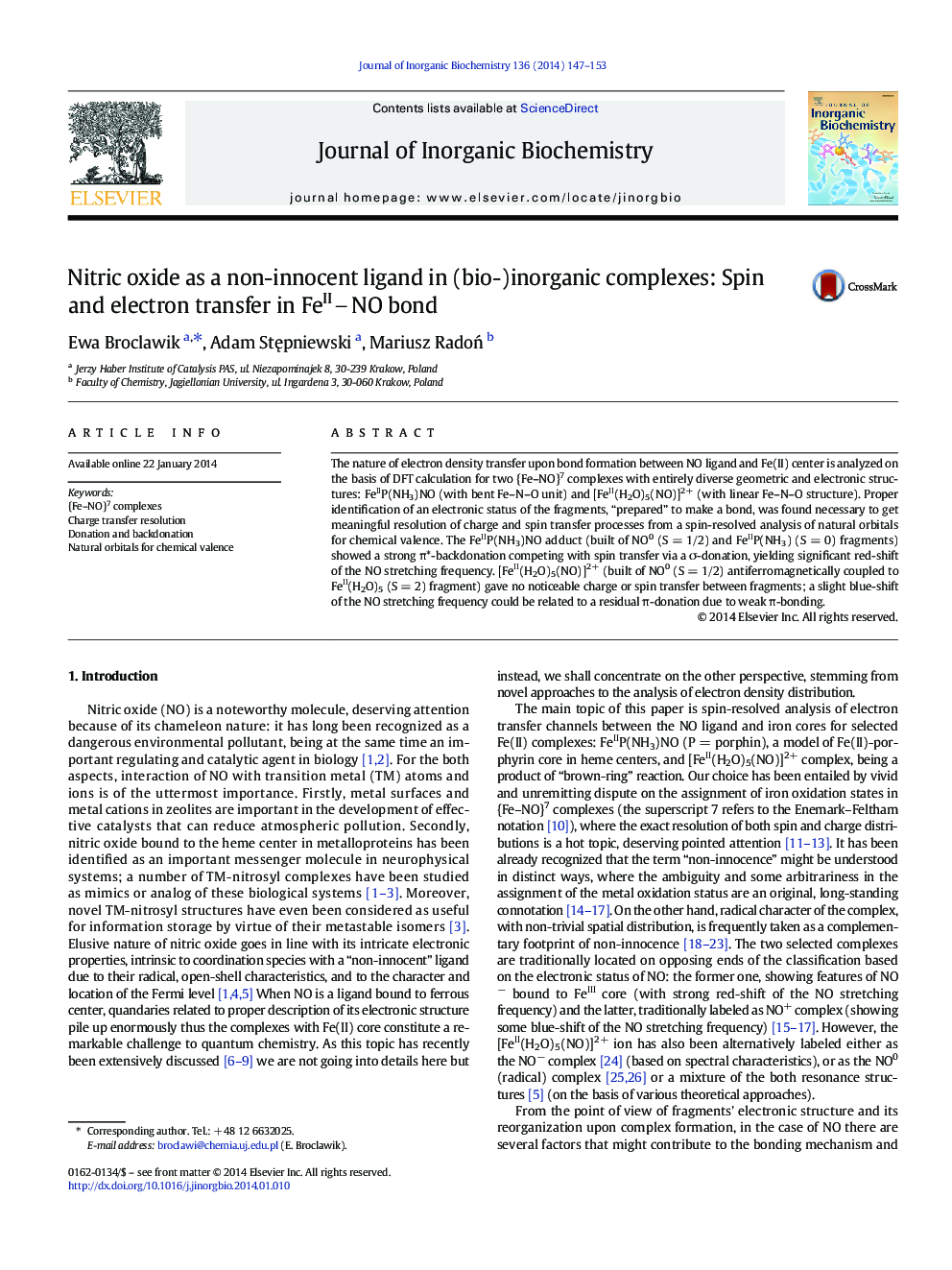| Article ID | Journal | Published Year | Pages | File Type |
|---|---|---|---|---|
| 1317386 | Journal of Inorganic Biochemistry | 2014 | 7 Pages |
•Resolution of charge and spin transfer yields new look on {Fe–NO}7 complexes.•Both FeIIP(NH3)NO and [FeII(H2O)5NO]2 +are mixtures of radical and CT structures.•For bent FeIIP(NH3)NO complex strong back-bonding prevails over donation.•No noticeable CT between NO and Fe fragments appears for linear [FeII(H2O)5NO]2 +.
The nature of electron density transfer upon bond formation between NO ligand and Fe(II) center is analyzed on the basis of DFT calculation for two {Fe–NO}7 complexes with entirely diverse geometric and electronic structures: FeIIP(NH3)NO (with bent Fe–N–O unit) and [FeII(H2O)5(NO)]2+ (with linear Fe–N–O structure). Proper identification of an electronic status of the fragments, “prepared” to make a bond, was found necessary to get meaningful resolution of charge and spin transfer processes from a spin-resolved analysis of natural orbitals for chemical valence. The FeIIP(NH3)NO adduct (built of NO0 (S = 1/2) and FeIIP(NH3) (S = 0) fragments) showed a strong π*-backdonation competing with spin transfer via a σ-donation, yielding significant red-shift of the NO stretching frequency. [FeII(H2O)5(NO)]2+ (built of NO0 (S = 1/2) antiferromagnetically coupled to FeII(H2O)5 (S = 2) fragment) gave no noticeable charge or spin transfer between fragments; a slight blue-shift of the NO stretching frequency could be related to a residual π-donation due to weak π-bonding.
Graphical abstractFigure optionsDownload full-size imageDownload as PowerPoint slide
